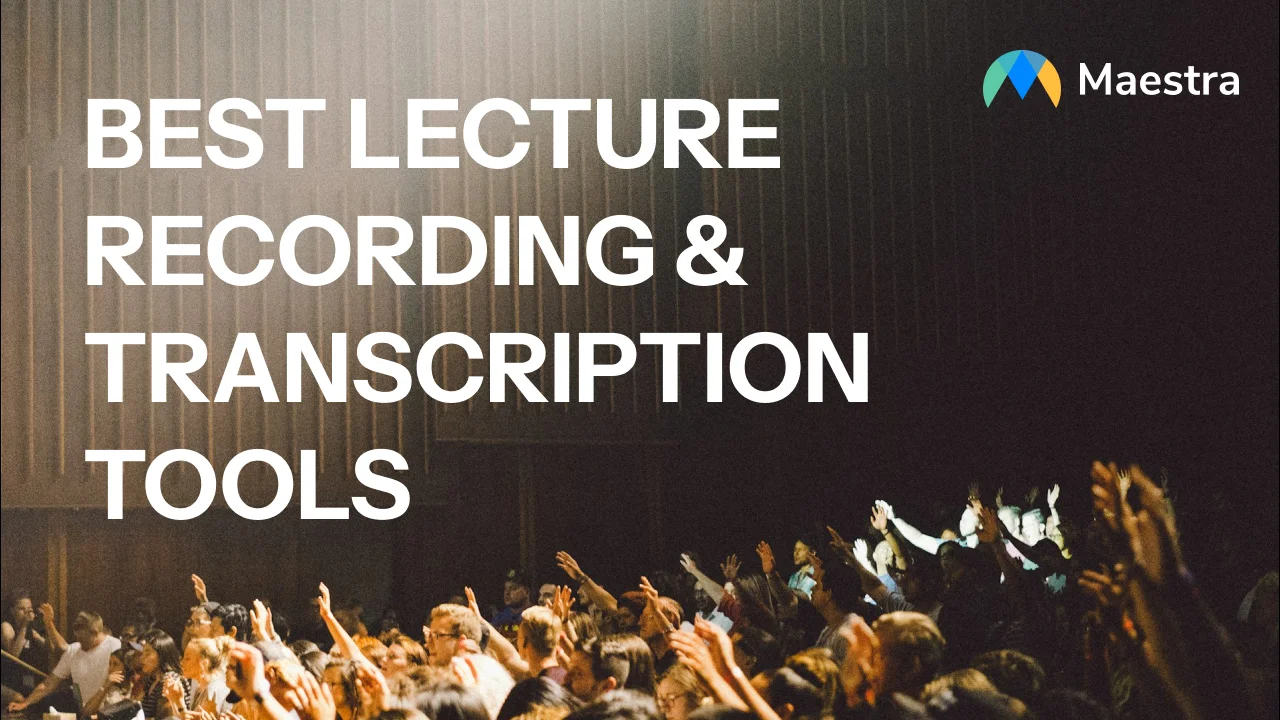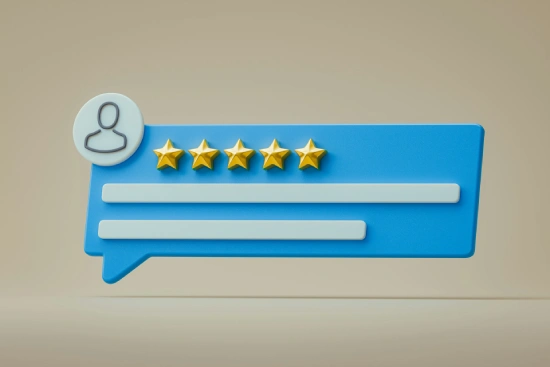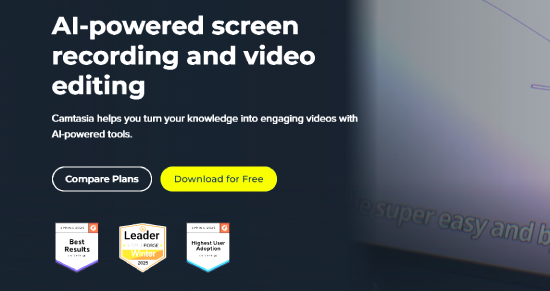Top 5 Lecture Recording Apps Reviewed & Compared

Recording lectures is no longer a nice-to-have, it’s essential. Whether you’re a student trying to keep up with complex lectures, an educator sharing resources online, or a professional capturing training sessions, the right lecture recording app can save you hours of work and help you retain more information.
In this review, I talk about my experiences using the best lecture recording apps in 2025 and how they compare.
Why You Need a Lecture Recording App

A good lecture recording app does more than just record audio — it helps you capture, understand, and organize information in ways that make learning and teaching easier.
- For students: Review complex topics, catch details you missed, and study more efficiently.
- For educators: Create reusable digital lessons, share recordings with students instantly, and support hybrid/online learning.
- For professionals: Record training sessions, team meetings, and webinars for later review.
By using an app that also offers transcription, translation, and sharing features, you go from simply recording to maximizing the value of every lecture.
What to Look For in the Best Lecture Recording App

When choosing the right tool, look for these must-have features:
- Crystal-Clear Audio Quality – High fidelity ensures no important details are lost.
- Automatic Transcription & Subtitles – Saves time and boosts accessibility.
- Multi-Language Support – Great for international audiences.
- Cloud Storage & Easy Sharing – Access recordings from anywhere.
- Searchable Transcripts – Quickly find topics without re-listening to the whole lecture.
- Cross-Platform Compatibility – Works on your laptop, phone, or directly in the browser.
- Editing & Annotation Tools – Highlight important points and cut unnecessary sections.
- AI Enhancements – Noise reduction, speaker identification, and translation.
Top Lecture Recording Apps in 2025
Tactiq
.webp)
I first tried Tactiq to transcribe an interview, and it immediately impressed me with how seamlessly it plugged into Zoom and Google Meet. The transcripts popped up almost instantly, and the AI summaries were surprisingly accurate for quick review afterward.
What I liked: The integration is smooth, and the transcript quality is solid even with fast speakers. It’s also great that you can export the notes right after the session without fiddling around.
What could be better: It’s clearly built for live sessions, so if you’re after advanced audio editing or offline recording, this isn’t the one.
Bottom line: Fantastic if you’re often in virtual lectures and want real-time, no-effort transcription.
Maestra
.webp)
When comparing Maestra to the other lecture recording & transcription tools, I was expecting solid transcription (and it has that with sub 1 second live transcription), but it went beyond that. It is a live translator in 125+ languages, instant subtitles, speaker identification, and even live AI dubbing. It felt like having a mini production studio in the browser.
What I liked: The multilingual capabilities are unmatched, and the lip-sync dubbing feature is genuinely mind-blowing when you want to share lectures with an international audience. Collaboration in the cloud is also smooth and intuitive.
What could be better: You’ll need a stable internet connection to get the most out of it, and if you only want basic audio capture, the full suite might feel like overkill.
Bottom line: If you want your lectures not just recorded but also transcribed, translated, and ready to share globally, Maestra is in a league of its own.
Otter.ai

I’ve been using Otter.ai on and off for over a year, and its strength is definitely in how it organizes your lecture notes. The folders, tags, and highlights make it ridiculously easy to go back and find a specific quote or topic.
What I liked: The synced audio playback is a lifesaver—you can click on a part of the transcript and jump right to that moment in the recording.
What could be better: It’s not built for polished final videos, and while the transcription is strong, it sometimes struggles with heavy accents or background noise.
Bottom line: A must-have if your main goal is searchable, well-organized notes you can refer back to in seconds.
Panopto

I had the chance to use Panopto at a university where I guest lectured, and it’s a beast of a system. The capture quality is excellent, and the in-video search is genuinely impressive—you can type a keyword and it jumps to the exact spot in the lecture.
What I liked: It’s tailor-made for large organizations, with rock-solid integrations into LMS platforms like Canvas and Blackboard.
What could be better: It’s not something you casually download; it usually requires an institutional license, which means it’s not as accessible for individuals.
Bottom line: If your school or company offers Panopto, use it—it’s one of the most powerful lecture capture tools out there.
Camtasia

Camtasia has been a solid solution for producing training videos, and it’s equally great for lectures when you want full control over the final product. You can record your screen, add transitions, annotations, and even quizzes.
What I liked: The editing flexibility is unmatched. You can make a lecture look and sound like a professional e-learning course.
What could be better: It’s overkill if all you need is a quick recording, and the learning curve can be steep for casual users.
Bottom line: Perfect for educators or creators who want their lecture recordings to be visually engaging and highly polished.
How These Apps Compare Side by Side
After spending time with each of these tools, here’s how they stack up when it comes to the features that matter most for lecture recording:
| Feature | Tactiq | Otter.ai | Panopto | Camtasia | Maestra |
| Real-time transcription | ✅ | ✅ | ❌ | ❌ | ✅ |
| AI summaries | ✅ | ✅ | ❌ | ❌ | ✅ |
| Searchable transcripts | ✅ | ✅ | ✅ | ❌ | ✅ |
| Built-in video editing | ❌ | ❌ | ❌ | ✅ | ❌ |
| Translation & dubbing | ❌ | ❌ | ❌ | ❌ | ✅ |
| Lip-sync technology | ❌ | ❌ | ❌ | ❌ | ✅ |
| Cloud collaboration | ✅ | ✅ | ✅ | ❌ | ✅ |
| Works offline | Limited | Limited | ❌ | ✅ | ❌ |
Tips for Getting the Most Out of Your Lecture Recording App
From my own use, these little adjustments make a big difference:
- Position your mic smartly: Whether it’s your laptop mic or an external one, getting it close to the speaker makes a huge impact on transcription accuracy.
- Test before going live: Run a short test recording to make sure volume levels are right and the app is picking up speech clearly.
- Use noise reduction settings: Apps like Maestra and Camtasia handle background noise well, but a quiet environment always wins.
- Label your files instantly: It’s a pain to rename them later—add the date, subject, and topic right after saving.
- Review transcripts while fresh: The faster you highlight or correct key parts, the more accurate your lecture notes will be over time.
7. Conclusion – Which Should You Choose?
After testing all five, I’d say it comes down to your priorities:
Quick online lectures with instant notes? Go for Tactiq or Otter.ai.
institutional, large-scale lecture management? Then choose Panopto.
Highly polished, edited lecture videos? Go with Camtasia.
One-stop shop for recording, transcription, translation, and sharing? The best answer is Maestra AI.
No matter which you choose, the key is to make sure your recording app fits your workflow, not the other way around. A good lecture recording tool should make you focus less on note-taking and more on absorbing and engaging with the material.
FAQ
What app is best to record lectures?
It depends on your needs. For real-time transcription and multilingual accessibility, Maestra is excellent. For quick, basic recording, Otter.ai or Tactiq are great choices. If you’re working within a university system, Panopto might already be provided to you.
What is the best voice recorder for lectures?
If you want pure voice recording without extra features, a simple mobile app like the built-in Voice Memos (iOS) or Easy Voice Recorder (Android) works well. For richer features like transcription and organization, Otter.ai or Maestra are better.
What is the best app to use for voice recording?
For general voice recording, Easy Voice Recorder, Voice Memos, and Smart Recorder are easy to use and reliable. But if you want AI extras like transcription, Tactiq and Maestra offer much more functionality.
What to use to record a lecture?
Use a dedicated lecture recording app like Maestra, Otter.ai, or Tactiq if you need transcripts and searchable notes. If you just need the raw audio, a phone voice recorder or portable digital recorder will do the job.
Can I transcribe lectures automatically?
Yes—apps like Maestra, Otter.ai, and Tactiq can transcribe lectures automatically as you record them, saving you hours of manual note-taking.
Do I need special equipment to record lectures?
Not necessarily. Most lecture recording apps work with your laptop or phone’s built-in microphone, but using an external mic can improve audio quality and transcription accuracy.
What’s the best free lecture recording app?
For basic recording, Easy Voice Recorder and Voice Memos are free and effective. For AI-powered features, Maestra and Otter.ai both offer free plans with limited transcription hours.
